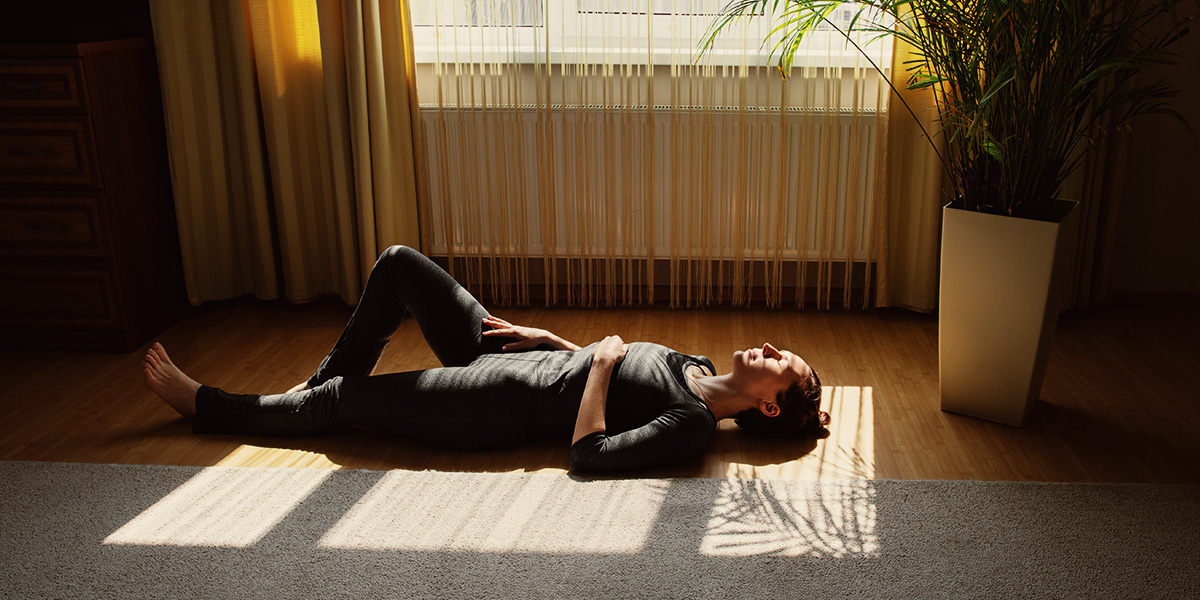Mission accomplished: You’ve just run your first 5K or 10K – that’s quite a feat. Few people are able to run that far. Now, how do you recover effectively to stay in top shape?
How to prepare for your first 5k or 10k run
Decided to challenge yourself and sign up for your first 5 km or 10 km run? Here’s how to have fun and avoid injury.

Running your first 5 km or 10 km race is a great challenge. To do it without injury, you need to train well. Blaise Dubois is a physiotherapist and founder of La clinique du coureur. He gives us his advice on how to cross the finish line with a smile on your face and no injuries. Lace up your shoes and get going!
By signing up for an event, you’ve already taken a first important step: given yourself a reason to run. “When people stop training, it’s often because they’re not motivated. Setting a goal is the best way to start running and keep it up,” says the running expert.
To run well, you must first avoid injury
Running may seem like a very simple physical activity, but it’s far from it. It’s a lot more stressful on the body than cycling or swimming. “When you run for 10 minutes, you jump on each leg 900 times. Imagine doing the same number of repetitions with your arms while stretching a rubber band, for example. That’s when you realize that this is not a sport to be taken lightly,” says Blaise Dubois.
Unfortunately, most novices skip the steps. They cover too many kilometres quickly without any technique. As a result, they injure themselves and put away their running shoes. Their training ends in failure. “That’s why I often say that a beginner’s main mission is to avoid injury,” he says. But that’s easier said than done.
Four rules for injury-free running
1. Train gradually
To steer clear of injuries, start training very gradually. The goal is to allow your joints to adapt. Otherwise, they’ll start grinding. “Start by running slowly over short distances. Alternate a one-minute run with a one-minute walk,” says Blaise Dubois. At this stage, you’re moving at low speed. “The goal is to learn to run,” the expert says. Don’t try to keep up with your friend who’s already used to running. That’s a blueprint for injury.
2. Run regularly, every day (yes, every day!)
When you start running, get moving every day over short distances. No really: every day! Take a day off from time to time when you feel the need. The mistake many beginners make is to run two or three times a week over longer distances. “The body tolerates regular, low-level stress better than occasional higher-level stress,” explains the co-author of La clinique du coureur.
Little by little, you build up muscles that can support longer and longer distances. That’s why it’s important to start your training program a few weeks before your challenge. “Race programs for a 5 km or 10 km run typically last 12 weeks,” he says. You don’t take on such a physical challenge on a whim.
3. Adopt the right running technique
Running is natural. Do you really need to worry about technique? Yes, you do. There are two things to consider: cadence and ground contact.
- Cadence is the number of steps per minute. The ideal cadence is 180 steps/minute plus or minus 10, regardless of your level. You do this by adopting the small-step technique. “Small strides reduce the speed of impact with the ground. This reduces stress on the knees, hips and lower back,” says Dubois. Above all, avoid long strides, which are a source of injury—a common mistake among beginners. And what’s more, they slow you down! You don’t need to count your steps as you run. Training watches and sports apps on smartphones calculate the cadence.
- Ground contact is how you “land.” Try to reduce the noise of contact when your feet hit the ground. “If you make a lot of noise, it’s because your technique isn’t up to scratch,” says Dubois. Maybe your strides are just too big. Check on yourself.
4. Get the right shoes
The racing industry is constantly inventing expensive, technologically advanced shoes. People who wear them are promised record times. These ultra-cushioned carbon-plate shoes are for experienced runners—people who already have a good running technique.
In contrast, shoes for beginners have a simple construction. No frills. They’re light, with soles that keep your feet close to the ground, and no heel rise. (Plus, they’re easier on your budget!)
“With basic shoes, a novice runner will adopt a more natural, protective running technique. It’s the key to preventing injuries,” says Blaise Dubois. When you’re a seasoned runner, you can try out the high-end products. But not before.
How do you prepare for your first big race?
This is it. You’ve followed your training program to perfection. A few days before the race, you need to reduce the intensity of your training. The goal is to preserve your energy for the big day. In running jargon, this stage is known as the “tapering” phase.
Now you need to trust your training to get you to the finish line. Don’t try to build up mileage at the last minute to make up for missed training sessions. There’s no point in exhausting yourself before the race.
Millions of people around the world practise running. The first few kilometres on your first outings are tough. Don’t be discouraged. Fun comes with practice. Gradually, you’ll feel your fitness improve and your physical abilities increase. Above all, you’ll secrete hormones like dopamine, which make running a feel-good sport. Maybe running will even become your new passion!
What if you want to try a 5 km or 10 km walk instead?
Whether you walk or run, the same recommendations apply. You need to train in advance, walk every day or so, and don’t skip steps. Go gradually, increasing the distance as you go. Remember—slow and steady wins the race.



